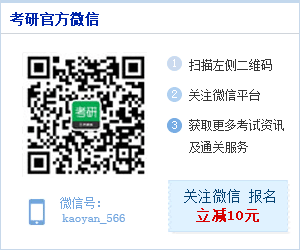Shortages of flu vaccine are nothing new in America, but this year's is a whopper. Until last week, it appeared that 100 million Americans would have access to flu shots this fall. Then British authorities, concerned about quality-control problems at a production plant in Liverpool, barred all further shipments by the Chiron Corp. Overnight, the U.S. vaccine supply dwindled by nearly half——and federal health officials found themselves making an unusual plea. Instead of beseeching us all to get vaccinated, they're now urging most healthy people between the ages of 2 and 64 not to. “This re-emphasizes the fragility of our vaccine supply,” says Dr. Martin Myers of the National Network for Immunization Information, “and the lack of redundancy in our system.”
Why is such a basic health service so easily knocked out? Mainly because private companies have had little incentive to pursue it. To create a single dose of flu vaccine, a manufacturer has to grow live virus in a 2-week-old fertilized chicken egg, then crack the egg, harvest the virus and extract the proteins used to provoke an immune response. Profit margins are narrow, demand is fickle and, because each year's flu virus is different, any leftover vaccine goes to waste. As a result, the United States now has only two major suppliers (Chiron and Aventis Pasteur)——and when one of them runs into trouble, there isn't much the other can do about it. “A vaccine maker can't just call up and order 40 million more fertilized eggs,” says Manon Cox, of Connecticut-based Protein Sciences Corp. “There's a whole industry that's scheduled to produce a certain number of eggs at a certain time.”
Sleeker technologies are now in the works, and experts are hoping that this year's fiasco will speed the pace of innovation. The main challenge is to shift production from eggs into cell cultures——a medium already used to make most other vaccines. Flu vaccines are harder than most to produce this way, but several biotech companies are now pursuing this strategy, and one culture-based product (Solvay Pharmaceuticals' Invivac) has been cleared for marketing in Europe.
For America, the immediate challenge is to make the most of a limited supply. The government estimates that 95 million people still qualify for shots under the voluntary restrictions announced last week. That's nearly twice the number of doses that clinics will have on hand, but only 60 million Americans seek out shots in a normal year. In fact, many experts are hoping the shortage will serve as an awareness campaign——encouraging the people who really need a flu shot to get one.
注(1):本文选自Newsweek; 10/18/2004, p57-57, 2/3p, 1c;
注(2):本文习题命题模仿对象1—4题模仿1997年真题text 3,第5题模仿1997年真题text 4的第四小题;
1. Shortages of flue vaccine show that ____.
[A] America relies too much on foreign suppliers
[B] the demand of flue vaccines is high this year
[C] quality problem is a serious problem in flu vaccine production
[D] the supply of flu vaccines is rather weak and America has no back-up measures to make it up
2. The word “cleared” (Line 5, Paragraph 3) might mean ____.
[A]permitted
[B]removed
[C]proved
[D]produced
3. Private companies have little interest in producing flu vaccines because of ____.
[A]complicated process, high cost, low profit and high risk
[B]shortages of fertilized chicken eggs
[C]difficulty in growing live virus
[D]fast changing of flu virus
4. From the last paragraph we can infer that ____.
[A] the government hopes to solve the problem by way of volunteer restrictions
[B] more than 47 million Americans who are qualified to get flu vaccine shots can not get them this year
[C] America has to deal with a limited supply of flu vaccines this year
[D] normally only a small percentage of American population gets flu vaccine shots each year
5. According to the passage, which of the following is TRUE?
[A] All Americans are persuaded not to get vaccinated this year.
[B] The big problem in innovating flu vaccine producing technique is how to grow virus in a new way.
[C] More flu vaccines can not be produced in a short time because private companies refuse to produce more.
[D] Flu vaccines are easier than most vaccines to produce through cell cultures.
答案:D A A B B
编辑推荐:
·2021年考研真题及答案解析专题 (2020-12-27)
·2021年考研真题及答案解析专题 (2020-12-27)
·2021考研英语完型填空暑期练习题及答案汇总 (2020-6-24 19:35:21)
·2021考研英语完型填空暑期练习题及答案(6) (2020-6-24 19:34:08)
·2021考研英语完型填空暑期练习题及答案(5) (2020-6-24 19:33:05)
·免费真题 ·模考试题


- 1
- 2
- 3
- 4
- 5
- 6
- 7
- 8
- 9
- 10
| · | 2022考研复试联系导师有哪些注意事 | 04-28 |
| · | 2022考研复试面试常见问题 | 04-28 |
| · | 2022年考研复试面试回答提问方法有 | 04-28 |
| · | 2022考研复试怎么缓解缓解焦虑心态 | 04-27 |
| · | 2022年考研复试的诀窍介绍 | 04-27 |
| · | 2022年考研复试英语如何准备 | 04-26 |
| · | 2022年考研复试英语口语常见句式 | 04-26 |
| · | 2022年考研复试的四个细节 | 04-26 |
| · | 2022考研复试准备:与导师及时交流 | 04-26 |
| · | 2022考研复试面试的综合技巧 | 04-26 |

实用文档 | 入党资料 | 入党申请书 | 入党志愿书 | 个人自传 | 转正申请书 | 思想汇报 | 个人简历 | 简历模板 | 简历封面 | 工作计划 | 工作总结 | 自我评测
个性评测 | 社交评测 | 事业评测 | 运势评测 | 报告 | 实习报告 | 工作总结 | 社会实践 | 心得体会 | 述职报告 | 调查报告 | 辞职报告
法律文书 | 合同范本 | 演讲范文 | 更多>>
英语学习 | 听力口语 | 阅读写作 | 翻译文化 | 趣味英语 | 学习方法 | 英文经典歌曲 | 每日课堂 | 空中英语 | 少儿英语 | 影视英语 | 英文歌曲 | 更多>>
作文大全 | 作文 | 小学 | 初中 | 高中 | 话题作文 | 考研 | 四六级 趣味作文 | 体裁作文 | 记叙文 | 议论文 说明文 | 应用文 | 读后感 | 作文素材 | 名言警句
优美段落 | 哲理故事 | 诗词赏析 | 成语知识 | 技巧 | 写作指导 | 作文点评 | 佳文赏析 | 写作基础 | 话题演练 | 作文教学 | 更多>>


